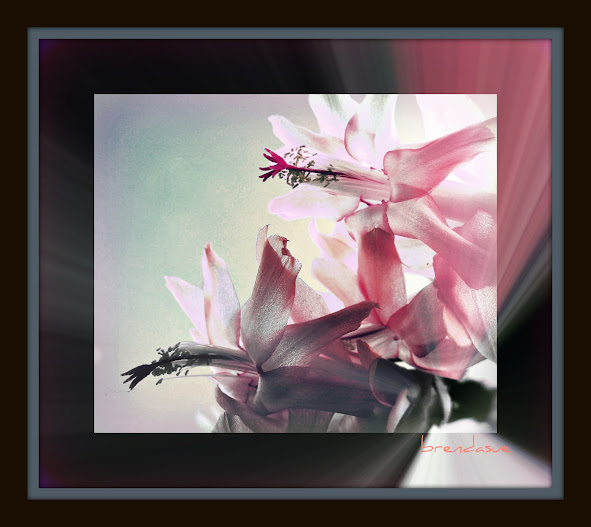
Hi Everybody!!
Spreading a little Christmas Cheer from the December Garden. The weather has been fantastic this week so I have been working in the yard everyday. I have many leaves and still falling. They go into the beds (to make new dirt). The snakes are hibernating, so I do not worry about them in December. The Anoles hibernate also, but on a sunny day they come out of the hole for awhile. Enjoy the Christmas Cactus and other Garden Surprises!
Share your Joy this year!



https://en.wikipedia.org/wiki/Dactyloidae
Dactyloidae
From Wikipedia, the free encyclopedia
The Dactyloidae are a family of lizards commonly known as anoles /əˈnoʊliːz/.NCBI places the anole in subfamily Polychrotinae of the family Iguanidae.[1] The family is generally considered to be monotypic, containing only the genus Anolis; however recent genetic research has identified several clades within Anolis which may sometimes be elevated to generic status. These clades are: Dactyloa,Deiroptyx, Ctenonotus, Xiphosurus, Norops, Chamaelinorops, Anolis (exclusive of the other recognized monophyletic clades) and Audantia.
The taxon Polychrus was previously also placed in the family under the family namePolychrotidae; however recent genetic studies confirm that Polychrus is not a sister to Anolis and is in fact more closely related to Hoplocercidae. ThereforePolychrotidae has been restricted to containing only Polychrus.
Due to their ability to change color, anolis (anole) lizards are frequently referred to as American chameleons. Also, because they can run up walls, they are sometimes confused with geckos. They are not closely related to either of those groups and, in fact, are more closely related to iguanas.
| Dactyloidae | |
|---|---|
 | |
| Carolina anole with dewlap extended | |
| Scientific classification | |
| Kingdom: | Animalia |
| Phylum: | Chordata |
| Class: | Reptilia |
| Order: | Squamata |
| Suborder: | Iguania |
| Family: | Dactyloidae |


Garden Surprises



https://plus.google.com/u/0/photos/117645114459863049265/albums/5676049980898486785

https://plus.google.com/u/0/photos/117645114459863049265/albums/5686961378432117585
Christmas Cactus



https://en.wikipedia.org/wiki/Schlumbergera
Schlumbergera
From Wikipedia, the free encyclopedia
Schlumbergera is a small genus of cacti with six species found in the coastal mountains of south-eastern Brazil. Plants grow on trees or rocks in habitats which are generally shady with high humidity and can be quite different in appearance from theirdesert-dwelling cousins. Most species of Schlumbergera have stems which resemble leaf-like pads joined one to the other and flowers which appear from areoles at the joints and tips of the stems. Two species have cylindrical stems more similar to other cacti. In Brazil, the genus is referred to as Flor de Maio (May flower), reflecting the period in which they flower in the Southern Hemisphere.
This genus contains the popular house plants known by a variety of names includingChristmas Cactus, Thanksgiving Cactus, Crab Cactus and Holiday Cactus, which areSchlumbergera cultivars, and flower in white, pink, yellow, orange, red or purple. (The Easter Cactus or Whitsun Cactus, which may also be called a Holiday Cactus and has vivid scarlet flowers in the most commonly grown form, is now placed in the genusHatiora.) The cultivars of Schlumbergera fall into two main groups:
- The Truncata Group contains all cultivars with features derived mainly from the species S. truncata: stem segments with pointed teeth; flowers held more or less horizontally, usually above the horizontal, whose upper side is differently shaped from the lower side (zygomorphic); and pollen which is yellow. They generally flower earlier than members of the Buckleyi Group and although common names are not applied consistently may be distinguished as Thanksgiving Cactus, Crab Cactus or Claw Cactus.
- The Buckleyi Group contains all cultivars with at least some features clearly showing inheritance from S. russelliana: stem segments with rounded, more symmetical teeth; more or less symmetrical (regular) flowers which hang down, below the horizontal; and pollen which is pink. They generally flower later than members of the Truncata Group and are more likely to be called Christmas Cactus.
| Schlumbergera | |
|---|---|
 | |
| Cultivar belonging to the SchlumbergeraTruncata Group | |
| Scientific classification | |
| Kingdom: | Plantae |
| (unranked): | Angiosperms |
| (unranked): | Eudicots |
| (unranked): | Core eudicots |
| Order: | Caryophyllales |
| Family: | Cactaceae |
| Subfamily: | Cactoideae |
| Tribe: | Rhipsalideae |
| Genus: | Schlumbergera |



...this is brendasue signing off from Rainbow Creek. See You next time!
Are You getting the spirit of the season?

Link to album:
https://plus.google.com/u/0/photos/117645114459863049265/albums/5689004597574747585
O+O

No comments:
Post a Comment
Hi Everybody! Please say hello and follow so I know you are here! Due to the inconsideration of people trying to put commercials on my blog comment area, I have restricted use of anonymous posts. Sorry that some hurt all.
My public email is katescabin@gmail.com No spammers or trolls